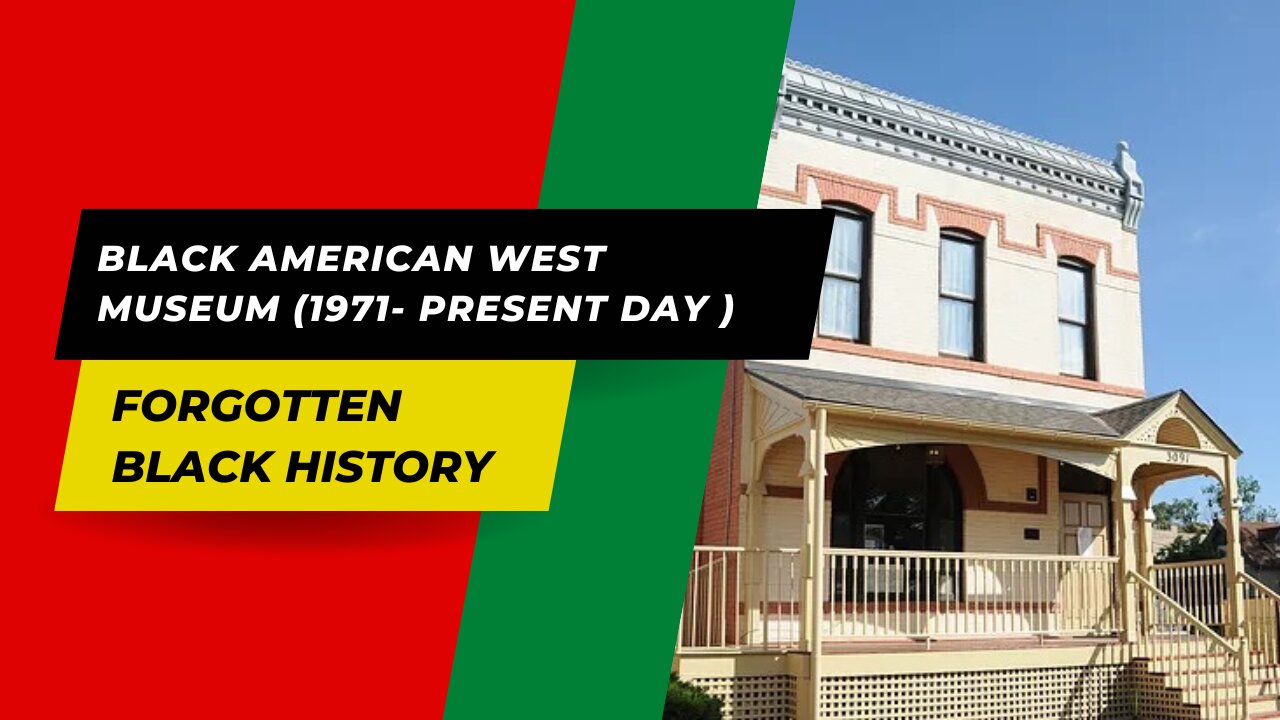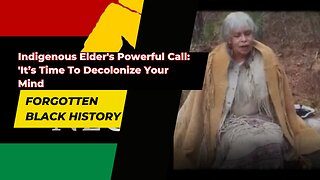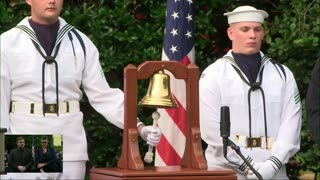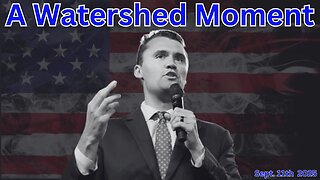Premium Only Content

BLACK AMERICAN WEST MUSEUM (1971- )
This video is brought to you by, Fiverr: https://go.fiverr.com/visit/?bta=500952&brand=fiverrhybrid
Fiverr Learn: https://go.fiverr.com/visit/?bta=500952&brand=fiverrlearn
Fiverr Business: https://go.fiverr.com/visit/?bta=500952&brand=fb
Become a Fiverr Affiliate: https://go.fiverr.com/visit/?bta=500952&brand=fiverraffiliates
Fiverr Workspace: https://go.fiverr.com/visit/?bta=500952&brand=workspace
Welcome to "Forgotten Black History". On this channel we talk about special places, events and people in Black History, This page serves as an index to the prominent figures featured throughout the Black History society. Black history is the story of African Americans in the United States and elsewhere. We want to celebrate, remind, and pay respect to not only African Americans but Black people of all races and backgrounds. We hope you subscribe to join the family, so we can grow a small community to help people of all races know just how special black people actually are in the world. Thank you for taking the time out to visit our channel. We hope you subscribe, if you hadn't already. We wish you peace and love, and for you to stay safe out there.
#BlackHistory #ForgottenBlackHistory #BlackPeople
Check out our Rumble page for exclusive videos: https://rumble.com/c/c-1788327
Paul W. Stewart, founder of the Black American West Museum, grew up in Iowa playing cowboys and Indians with his friends who always made him play an Indian. They assured him that there were no black cowboys and thus he had to play the role of the Indian. As an adult living in Denver, Stewart discovered this was not true and began a lifetime search for stories, photographs, clothing, memorabilia, and papers to document the existence of black cowboys in the West.
Stewart’s passion led him beyond cowboys and he accumulated an extensive collection related to black Western pioneers that he wanted to share with others. In 1971, the collection served as the nucleus of a small museum that opened in the basement of Denver’s Clayton College. In 1983, when community leaders learned that a developer planned to raze the Dr. Justina Ford House, they requested a delay to allow them to find funds and a location for its removal. The developer complied and Historic Denver, Inc., a private non-profit group, gave preservation funds to move the home in 1984 to its current California Street location in Five Points. Under the supervision of a newly-formed Board of Trustees, the home was restored and opened to the public in 1988 with Stewart as its curator. The exhibits included Dr. Ford’s examining room on the main floor, and a black homesteader’s room, a farming and ranching room, and, of course, a room honoring black cowboys of the early West on the second level.
Today, thanks to Stewart and community-wide involvement, the museum has become well known as a destination point for visitors from around the world for its photographs, artifacts, and historic documentation on African Americans in the West.
-
 13:47
13:47
Forgotten Black History
8 months agoIndigenous Elder's Powerful Call 'It’s Time To Decolonize Your Mind
1841 -
 LIVE
LIVE
Bannons War Room
6 months agoWarRoom Live
7,978 watching -
 25:21
25:21
The Shannon Joy Show
2 hours agoA message of encouragement and a call for faith and unity after the tragic killing of Charlie Kirk
35.3K13 -
 1:31:37
1:31:37
The Big Mig™
3 hours agoIn Honor Of Charlie Kirk, Rest In Peace 🙏🏻
32.2K14 -
 1:36:35
1:36:35
The White House
5 hours agoPresident Trump and the First Lady Attend a September 11th Observance Event
108K43 -
 1:38:49
1:38:49
Dear America
5 hours agoWe Are ALL Charlie Now! This Isn’t The End. We Will FIGHT FIGHT FIGHT
189K196 -
 2:09:21
2:09:21
Badlands Media
12 hours agoBadlands Daily: September 11, 2025
68.8K20 -
 2:59:26
2:59:26
Wendy Bell Radio
8 hours agoA Watershed Moment
89.2K211 -
 4:24
4:24
Bearing
9 hours agoCharlie Kirk ♥️
24.5K48 -
 1:07:12
1:07:12
The Mike Schwartz Show
4 hours agoTHE MIKE SCHWARTZ SHOW with DR. MICHAEL J SCHWARTZ 09-11-2025
16K3